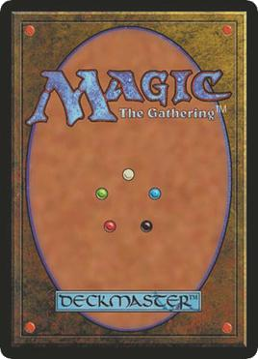I submitted the cube for public feedback, and while it was sparse (and a little confused) it was generally positive.
The first change I'm enacting is to lower the average CMC of red creatures, on the basis that Burn requires early damage to go off properly. Kolaghan Forerunners was already a concerning card for me because unsupported it's a 1-damage trampler (so, basically not a trampler). I'm swapping in Zurgo Bellstriker. Goblin Guide's downside is more felt in the format, and I wanted to preserve that Dash late-game opportunity (it's one of my favorite mechanics).
I want to follow this up with the first of several card edits: Tilonalli's Skinshifter is a powerful effect, but when it impacts as a 0/1 for 3cmc and is only as good as it's neighbors it's less of an aggro card and more of a midrange card. It also naturally precludes a synergy with any Legendary, which avoids Captain Lannery Storm, Alesha, who Smiles at Death and the new Zurgo Bellstriker. It's an impactful card in ramping when attached to other ramp-y friends, and for this reason, I'm kicking the CMC back to 
 .
.
Molten Vortex was brought up once as a problem card, mostly on the basis that the deck it enables is boring. While that's not...incorrect, it does something that no other card in the cube does: provides a one-card strategy (just mountains). This kind of flexibility leaves a b-option for off-pick drafters, and at worst it's a late pick. I think it deserves it's position.
The Cubecobra analysis highlighted Rakdos Augermage as the card in the cube with the lowest ELO, which makes sense since it's symmetric discard (intended to enable a hellbent), and I chose it on the basis that it rewarded clever aggro playing and included a repeatable effect, but It also has the distinct ability to fudge-over your own strategy. The correct choice, given the cube, is Murderous Redcap, but then I've baked a powerful infinite combo in with Anafenza, Kin Tree Spirit, so unfortunately I need a second choice. I think Hellhole Rats is an okaaay replacement, but I'd love something more clever that comes in T1-3. Hopefully something's in the MTG future league pipeline.
The most concerns were raised for the card Inverter of Truth, and when I first conceived of the cube, it was not so singularly powerful. Day's Undoing, Paradigm Shift, and Diminishing Returns were in the cube for reshuffle effects, as were more chump-fliers, so a 6/6 Colorless Flyer with upside for 4CMC sounded like an excellent late-game finisher. Now, I'm realizing just how powerful that is and wondering if it straight-up breaks the cube. Here's the problem: there is no other card even remotely like it, especially in Black. This brings me back to the forlorn conclusion: card edits are necessary in this format. Here's what I've come up with:
CMC=3BB, the highest I want to go, in league with other closers.
P/T=4/4, Keeps it safe from red for all but Flametongue Kavu, and makes it a 5-turn clock on it's own.
I completely missed that Lux Cannon can hit any permanent, and not just non-land permanents, essentially guaranteeing land destruction on T7. While that's not awful, per se, it's before the end of the deck, and could cripple, say, a Ruinous Ultimatum deck. Looking into alternatives, there's nothing quite so clear and wide. I'll be erratta-ing the card to only hit nonland permanents.
Searing Touch is concerning me with a CMC of 5, which is hard to accomplish consistently and is severely over-costed for the effect. I'm reducing the buyback cost to  . This makes it consistent with Recruit the Worthy, and hopefully it will see more play, as I think it enables some interesting lanes of play.
. This makes it consistent with Recruit the Worthy, and hopefully it will see more play, as I think it enables some interesting lanes of play.
The final complaint was that Ruinous Ultimatum was too expensive and distorts the deck, to which I say: maybe? I intended it to be an end-game condition and I've given fairly little recourse on the other player's end. Aside from a clutch Giver of Runes or Legion's Initiative, it should win you the game. Dawn Charm and Nevermore could shut it down, as might Thalia, Guardian of Thraben but they're intended to be strong control spells. I think that's worth a gamble, and puts it outside the tri-color "splash" zone. When I was conceiving of the cube I also considered Ankle Shanker, which accomplishes a similar effect, but without the double-colored-mana cost, it's too easy to pull of and was in every deck. Ruinous Ultimatum stays and, I'd argue, maintains deck diversity.
I'd like to revisit the format questions I asked in a previous post, and check to see how I've included those in the cube.
1. Players Need All of Their Lands: No Land or "Any-Permanent" Destruction, No More Blind Mill or Discard without it ending the game.This was at the forefront as I was considering removal slots and no direct removal is able to hit lands, I considered land-evening effects like Restore Balance and Limited Resources but instead opted for Mythos of Snapdax.
I don't know that it's 100% worked out for indirect removal, that said there is no blind mill in the cube...ish, I'm not couting Shenanigans. Hand-control is at the forefront of the discard archetype, but I wanted to be careful about my inclusions Mesmeric Fiend and Brain Maggot enable the archetype without fully locking out a play, Cabal Therapist is powerful but doesn't hit lands, and Gunk Slug is amazing in this small-deck format. I did include discard which could include lands. Let's review what was included:
Cabal Interrogator and Hollow Specter both have a natural bias against land cards at the opponent's discretion, making it harder to mana-screw your opponent, so I think they arguably answer the mandate. Pulse of the Dross was included because it recurs itself, and it extends the same logic as the reveal
 's natural bias against lands, but I worry reveal-three pick-one is too powerful of an exchange for the mana it's going on the watchlist.
's natural bias against lands, but I worry reveal-three pick-one is too powerful of an exchange for the mana it's going on the watchlist.Augur of Skulls fits the Aristocrats archetype well, and arguable is a win condition for the Discard archetype. It's powerful, but fits the cube well enough I'd like to make an exception. Also going on the watchlist. 2. The Clock is Different (the game has no end): Aggro decks shouldn't have be able to outpace lategame payoffs. Boards need to be playable after the cards have been played, or draws will never work.
Yeah, super-duper did this. Most of the card recur themselves, aggro strageties are built around getting spells out faster, most strategies have mana sinks to enable a mid-game race. Many of the decisions of the decks should come down to the combat step, and damage-clock should be a big consideration in drafting.
3. Many Cards End their Usefulness in Exile: Graveyard Effects are metered to this, but return from exile is a win-condition effect.To answer this I tried to limit the amount of exile-removal, but not remove it entirely. Exile should be a powerful effect that you are reaching into to (ideally) turn the tables and win a game Anguished Unmaking is in there specifically because Vindicate hits lands. These are the only cards that specifically end the card's playability with exile.
By contrast, exile is a useful zone, and there are plenty of cards in the cube that make use of it in interesting ways. Oblivion Ring-likes can be powerful tools. The answer to these Riftsweeper is clunky but I think it still has usefulness as a sideboard staple when counteracting an effect that makes up ~5% of the cube.
There's also suspend cards that interact with exile: Arc Blade, Epochrasite and Mox Tantalite, which Riftsweeper is not perfect for, but can speed up.
4. Draw makes low-curve (aggro) decks faster, and matter less to high-cmc (late game) decks.: 3-4CMC draw does not matter, cantrips/cycling/draw+effect is stronger on Lower CMC cards. Scry is an aggro effect, and allows for consistency in late game decks.Cycling was a big focus in the landbase I've been working on, but I don't think I did a good job on including enough Scry and Cantrips. This is definitely something to deep-dive on, and look for good places to swap-in utility draw.
5. Mulligans are orders of magnitude more consistent than 30-card deck drafts (~300x more): Decks can run fewer lands and still hit gas. Aggro strategies are simply more available when needed and midrange strategies are available when needed.I took out Sentinel Dispatch for this reason, and you'll also notice an absence of Leylines (Leyline of Lightning etc.) and no Chancellors (Chancellor of the Spires etc.) also no Gemstone Caverns and no Providence.
I also took advantage of this to limit the number of colored mana sources, because you can essentially guarantee that ETB-tapped lands enter T1-2, but idk if that's important. I also focused on colored mana sources that can be utilized in that aggro strategy with Cycling Lands and the Horizon Lands.
Perhaps there's some more that I can do to take advantage of this, and on the next patch I should consider ways to encourage more aggro strategies of all sorts. 6. Lands have a limit, but mana doesn't. Cards like Storage Lands, etc make a lot out of very little.
Using the 40% heuristic of standard, decks run 6 lands. Mulligans can pull that number easily down to 5 with just basic lands and no fixing. Curves mutate in favor of 1 and 2 drops, and shy away from 5+.
I don't have as many 1-drops as I might, but I do have a good number of 1-mana sinks for the late game. There are certainly excellent 2-drops. As I said before, I've removed land destruction. There is also only one card that costs above 5-mana, and only three 5-drops
I've shied away from the implication that technically limitless mana is a good thing. It enables  -spells and big spells and that's not necessarily a good thing. Scalability is powerful, but
-spells and big spells and that's not necessarily a good thing. Scalability is powerful, but  >4 is not the power level I want involved. I've limited the number of
>4 is not the power level I want involved. I've limited the number of  -spells in the cube to try to keep things:
-spells in the cube to try to keep things:
For further consideration, these are also the abilities that can be activated more than once in a turn:
Limiting the number of large-mana generators certainly limits the amount of mana involved in each turn's arc, but it also avoids cheap casting of infinitely-repeatable spells. Braid of Fire is a broken spell that only works during upkeeps, limiting which repeatable spells I could include. The other cost, the opportunity cost of not including Molten Slagheap is not super high either, I'd rather include the aggro-enabling Canyon Slough. 7. Deck End is inevitable, and the deck will never be larger than 15 cards. Deck size victories like Laboratory Maniac etc. lets a player win without strategy.
There's not a lot to say about this, I've made a point of not rewarding regular card draw or empty deck states (although I'm not above, say Arc-Slogger or Leveler in the future).
Further, I've included a few shuffle-into-library effects that let decks keep playing:
Yeah, uh. Think I got this one down. Aristocrats and Burn are purely built on this. Every deck has some ability to do this. Prior to play-testing, I can't judge how fast each recursion works but lets see how this goes.
9. Removal and Deactivation needs to be intentional. Removal should have threatening targets, and should come at a fair price. Effects that limit lines of play need to be susceptible to removal.There is no indestructible in the cube, and I've made a point of having my limiters on bodies, either creatures or enchantments.
I want removal to feature strongly, that's how we interact, their impacts should be felt and limited. I think I did a great job on that. Playtesting will be the final judge of this. 10. Magic was not designed for this. Enabling this might require some card editing. No Card is Immutable.
This was the main reason I moved out of WUBRG. Remaining in a shard ensures that I have all types of permanent removal (creature, artifact, and enchantment removal) but limiting the width of each deck (and ensuring we have a lot of deck variety within the archetypes).
Converting 
 to
to  opens each color up to more options outside their color, and is a natural way of card editing.
opens each color up to more options outside their color, and is a natural way of card editing.
The Watchlist
Cards that if they're gamebreakingly naughty need to be replaced:
- Obstinate Familiar
- Words of War
- Thunderblade Charge
- Hammer of Bogardan
- Honden of Infinite Rage
- Dread Wanderer
- Shrouded Lore
- Nether Traitor
- Reassembling Skeleton
- Blood Artist
- Zulaport Cutthroat
- Bastion of Remembrance
- Endless Cockroaches
- Savai Crystal
- Ruinous Ultimatum
- Ghen, Arcanum Weaver
- Aether Rift
- Power Conduit
- Magewright's Stone
- Lux Cannon
- Junktroller
- Tumble Magnet
- Arc Blade
- Feed the Swarm
- Tidehollow Sculler
- Louvaq, the Aberrant
- Robber Fly
- Thalia, Guardian of Thraben
- Spellskite
- Pull from Eternity
- Jötun Grunt
- Island Sanctuary
- Drannith Magistrate
- Law-Rune Enforcer
- Sulfuric Vortex
- Extinction Event
- Inverter of Truth
- Herald of Anafenza
- Gleam of Authority
- Mikaeus, the Lunarch
- Citadel Siege
- Conduit of Storms
- Molten Vortex
- Grinning Ignus
- Curse of Opulence
- Seething Song
- Lavabrink Floodgates
- Alesha, Who Smiles at Death
- Hanweir Garrison
- Hanweir Battlements
- Legion's Initiative
- Anguished Unmaking
- Terminate
- Mortify
- Leyline Tyrant
- Kargan Intimidator
- Goblin Cratermaker
- Searing Touch
- Ash Zealot
- Unlicensed Disintegration
- Shenanigans
- Bonecrusher Giant
- Flametongue Kavu
- Abrade
- Lightning Phoenix
- Everlasting Torment
- Tormod, the Desecrator
- Bloodsoaked Champion
- Sanitarium Skeleton
- Lampad of Death's Vigil
- Attrition
- Grave Pact
- Drifting Meadow
- Polluted Mire
- Smoldering Crater
- Cry of Contrition
- Augur of Skulls
- Gunk Slug
- Haunted Crossroads
- Call to the Netherworld
- Cabal Interrogator
- Recruit the Worthy
- Hidden Stockpile
- Judith, the Scourge Diva
- Mesmeric Fiend
- Soldevi Adnate
- Pulse of the Dross
- Thrull Parasite
- Dark Confidant
- Hollow Specter
- Umori, the Collector
- Smothering Tithe
- Rebuff the Wicked
- Silence
- Ainok Bond-Kin
- Dogged Hunter
- Nevermore
- Twilight Drover
- Vesperlark
- Abzan Battle Priest
- Archangel of Thune
- Abzan Falconer
- Epochrasite
- Anafenza, Kin-Tree Spirit
- Cenn's Tactician
- Prava of the Steel Legion
- Dawn Charm
- Collective Effort
- Brood of Cockroaches
- Thalia, Heretic Cathar
- Mangara of Corondor
- Eight-and-a-Half-Tails
- Stun Sniper
- Grand Abolisher
- Rakdos Augermage
- Duergar Hedge-Mage
- Kambal, Consul of Allocation
- Karlov of the Ghost Council
- Agent of Acquisitions
- Mox Tantalite
- The Ozolith
- Talisman of Conviction
- Talisman of Hierarchy
- Talisman of Indulgence
- Fetid Heath
- Graven Cairns
- Rugged Prairie
- Aether Hub
- Drownyard Temple
- Hall of Heliod's Generosity
- Mage-Ring Network
- Ash Barrens
- Crumbling Vestige
- Rishadan Port
- Volrath's Stronghold
- Soulfire Grand Master
- Labyrinth Raptor
- Clockspinning
- Hardened Berserker
- Mythos of Snapdax
- Kor Line-Slinger
- Azor's Elocutors
- Canyon Slough
- Silent Clearing
- Sunbaked Canyon
- Savai Triome
- Militia's Pride
- Cheering Fanatic
- Hellrider
- Tilonalli's Skinshifter
- Captain Lannery Storm
- Kolaghan Forerunners
- Vexing Devil
- Soul-Scar Mage
- Brain Maggot
- Thoughtpicker Witch
- Devour in Shadow
- Skyknight Vanguard
- Imp's Mischief
The Updated Decklist
Bringing in the new and what a change. New rules introduced, and a complete overhaul of the cube.
Now we're in Mardu colors, with a focus on cross-play. Here are the archetypes:
 Legion: Modular, Outlast, Soldier Tribal, +1/+1 Tribal, Bolster, Lifelink, Lifegain
Legion: Modular, Outlast, Soldier Tribal, +1/+1 Tribal, Bolster, Lifelink, Lifegain
 Control: Counterspells, Hatebears, Protection, Damage Negation, Resource Denial, Tap.
Control: Counterspells, Hatebears, Protection, Damage Negation, Resource Denial, Tap.
 Aristocrats: Aristocrats, Sacrifice, Recur from Graveyard, Graveyard Matters, Self-Recurring Creatures.
Aristocrats: Aristocrats, Sacrifice, Recur from Graveyard, Graveyard Matters, Self-Recurring Creatures.
 Discard: Discard, Madness, Return from Graveyard, Gunk Slug, Hand Denial.
Discard: Discard, Madness, Return from Graveyard, Gunk Slug, Hand Denial.
 Combat: On-attack Triggers, Dash, Big Creatures.
Combat: On-attack Triggers, Dash, Big Creatures.
 Burn: Repeatable Burn Spells, Direct Damage, Cast from Graveyard.
Burn: Repeatable Burn Spells, Direct Damage, Cast from Graveyard.
Other Neat Cards: There are a few build-around-me cards that I think justify inclusion through their own ability to form deck-lists.
160 CARDS
35 red [Combat // Burn] (4 removal)
35 black [Aristocrats // Discard] (4 removal)
35 white [Legion // Control] (4 removal)
6 rakdos (4 mechanic enablers, 2 removal)
6 orzhov (4 mechanic enablers, 2 removal)
6 boros (4 mechanic enablers, 2 removal)
2 mardu (1 removal)
16 colorless (3 Mana Rocks)
19 lands (12+ colorless sources)
In Each Color:
Main Mechanic 1: 13 of color + {2 gold mechanic enablers} [Combat //Recurring Creatures // +1/+1]
Secondary Mechanic 2: 11 of color + {2 gold mechanic enablers} [Burn // Discard // Control]
Cards Outside Mechanics: 3.
Support†: 4 in color
Special Cards: 3 in color
So, I've been rethinking what blue does, and realizing I might be making a mistake. Perhaps I should have seen that coming, by disallowing so much of blue's color pie. Looking into the history of this format, it's clear that blue suffers the same fate in constructed ban-lists. Blue might just be a problem color when you have fewer cards than life.
There is no rule I could make that would make constantly-drawing-your library a good. The closest rule I hit was If any player has drawn 30 cards, they win the game, focusing on the fast-draw reshuffle effects in Blue.
This made blue focus solely on drawing, and it felt like there simply was not enough resource denial for that to be meaningful. It rewarded blue for simply playing the game, which is a critique of self-mill strategies anyway, but it was also uninterruptible.
Making non-mill draw a win condition felt like a puzzle that could not be solved, and just neutered blue.
White has diverse lines of play, Outlast being a favorite strategy of mine:
White also fits that control aspect that can play to a long-game strategy as often as an aggro strategy:
I also think there's more of an opportunity for cross-play in 
 and
and 
 in this format as
in this format as 
 focused so directly on instants/sorceries, which are hard to recur.
focused so directly on instants/sorceries, which are hard to recur.
- Molten Slagheap
- Dreadship Reef
- Figure of Destiny
- Herald of Anafenza
- Swords to Plowshares
- Gleam of Authority
- Citadel Siege
- Mythos of Snapdax
- Citadel Siege
- Dragonscale General
- Swords to Plowshares
- Mikaeus, the Lunarch
- Mistmeadow Skulk
- Emerald Charm
- Llanowar Mentor
- Oviya Pashiri, Sage Lifecrafter
- Sudden Spinnerets
- Ivy Lane Denizen
- Elemental Mastery
- Beacon of Creation
- Twilight Drover
- Beacon of Creation
- Elemental Mastery
- Ivy Lane Denizen
- Twilight Drover
- Presence of Gond
- Orochi Eggwatcher
- Molten Birth
- Cyclical Evolution
- Zealous Guardian
- Scar
- Void
- Void
- Shrewd Hatchling
- Razia's Purification
- Louvaq, the Aberrant
- Grazing Kelpie
- Covetous Urge
- Sonorous Howlbonder
- Sigil of the Nayan Gods
- Maelstrom Pulse
- Izzet Staticaster
- Edgewalker
- Turn to Mist
- Pit Fight
- Sundering Growth
- Pit Fight
- Nature's Chant
- Meddling Mage
- Fate Transfer
- Shadowspear
- Armory of Iroas
- Phyrexian Splicer
- Spincrusher
- Hanweir Battlements
- Hall of Heliod's Generosity
- Pendelhaven
- Mistveil Plains
- Alchemist's Refuge
- Hanweir Garrison
- Oneirophage
- Ethereal Forager
- Clockspinning
- Ashnod's Coupon
- Ashnod's Coupon
- Ashnod's Coupon
- Ashnod's Coupon
- Ashnod's Coupon
- Ashnod's Coupon
- Ashnod's Coupon
- Ashnod's Coupon
- Ashnod's Coupon
- Ashnod's Coupon
- Ashnod's Coupon
- Darksteel Myr
This is the deck as it stands before changes:
https://imgur.com/cYyFSk0
First: The play-testing results.
The modular mechanic got a little out of hand and I felt like i wasn't focusing enough on what each color could bring. More than anything it felt like white-focused decks lacked...purpose? It felt like an enabler-color for other deck strategies.
The colorbending, however, is working. I freaking love what Gnat Miser is doing for blue "mill" strategies. The ratio of multicolor cards felt like it eliminated a lot of what was working about the format, and more than anything, made for a same-ness I don't like.
Second: What I'm going to do about it.
I'm going to cut colors from the cube.
Why? Well there's a few reasons. For a format this small, there's a natural punishment of multicolor-goodstuff, the land-base required to support that muddied the draft to the degree that land choices were more often duds than good picks. Moreover, I felt like the split left me with discordant archetypes--usually at one-per-color with modular as the support. I want harmonious archetypes in-color. I want multiple lines of interaction.
So, what will the cube look like now? Well, first going back to an earlier post, I would want to remind us that the format favors quick interactions followed by attrition, with the endgame a race between each deck's clock. To this, each color should have some access to early-, mid-, and late-game options. Conceptually, this is how I'm viewing the current archetypes:
Red: Repeating Damage I want red to to take some of the classic green archetypical mana production, attempting to outpace it's opponents by setting up an engine of repeatable direct-damage effects.
Supporting mechanics include damage modifiers, mana outlets, and damage outlets. Red can go tall, red can go fast.
Black: Creatures Matter I want black's traditionally undying creatures to take center stage in its win condition, taking advantage of sac loops and repeatable token generators. I want to see black win through going wide.
Black supporting mechanics include Sac Value opportunities, lifegain options, and unblockable creatures.
Blue: Outlast Card Advantage through hand control, and opportunity advantage through resource denial and taxation. The primary victory of blue should be removing opponents ability to play their strategy out. I will be bending-in a few to-the-bottom-of-your-library effects, to make this easier. I will also introduce a new format win condition, in place of decking, where some stalemate conditions result in a victory. (The exact wording is TBD, but essentially I want non-play non-damage stalemates to win in blue's favor).
Blue supporting mechanics include return-from-exile effects, flashback, small conditional mill effects, and repeatable counter-spells.
Will this work?
I'm honestly not sure, I'm re-entering a testing environment in a big way. I have the decklist saved if don't love what I come out with, but re-establishing a color pie is odd. I'm trying to keep the essence of each color's long-game meta-strategy in tact.
The five-color nature of the color pie at this point necessitates color-bending, but I'm going to do my best to respect the integrity of each card's CMC and tradeoffs. I want to avoid making new cards, per se, that said for balance reasons I might alter cards.
One of the biggest hurdles is the idea of off-color costs, two-color cards are restricted by access to two resources. Obviously, cards in Dimir, Izzet, and Rakdos have automatic viability in this cube, but if I were to color-bend a Gruul effect I wouldn't want to give access to another color. To meter this, I might introduce  costs, and increase the number of utility lands. Ideally, this keeps mono-color decks at the forefront of the drafting experience.
costs, and increase the number of utility lands. Ideally, this keeps mono-color decks at the forefront of the drafting experience.
I also think I can abandon the storage lands that CardKnockLife so loved. Mana having a per-turn cap is an incredible meter for many of the stronger effects in the cube, I don't think I need to be flexing anything over 5cmc.
Do I know what I'm doing?
Maybe
P.S. With this update, I get to flex my way around some of the color-locked abilities. This means I will be abandoning both the enemy storage lands and the colorshifted cards.
For my previous build (snapshot here: https://imgur.com/5w1fevE), I wanted to focus on two-color archetypes and attempted to fill in as needed. I started with a template cube, and built a catalogue of cards to fill it, and for the most part I chose the most interactive and re-playable cards. This created a muddy, but also...hard-to-digest environment (that said, it was my first PLAYABLE environment that didn't just degenerate into t1 losses). My focus on establishing two-color archetypes hid a lot of what is great about the format. Almost all of the feedback I received was that the environment was indecipherable as is (ouch). MY biggest problem was that some decks were just better, and with enough hard-to-run cards, variety was low to nada.
So let's approach it from a different direction.
Starting with what we know about the format, and how can that inform my card choices?
- Players Need All of Their Lands
- No Land or "Any-Permanent" Destruction, No More Blind Mill or Discard without it ending the game.
- The Clock is Different (the game has no end)
- Aggro decks shouldn't have be able to outpace lategame payoffs. Boards need to be playable after the cards have been played, or draws will never work.
- Many Cards End their Usefulness in Exile
- Graveyard Effects are metered to this, but return from exile is a win-condition effect.
- Draw makes low-curve (aggro) decks faster, and matter less to high-cmc (late game) decks.
- 3-4CMC draw does not matter, cantrips/cycling/draw+effect is stronger on Lower CMC cards.
- Scry is an aggro effect, and allows for consistency in late game decks.
- Mulligans are orders of magnitude more consistent than 30-card deck drafts (~300x more)
- Decks can run fewer lands and still hit gas.
- Aggro strategies are simply more available when needed
- Midrange strategies are available when needed.
- Lands have a limit, but mana doesn't.
- Using the 40% heuristic of standard, decks run 6 lands. Mulligans can pull that number easily down to 5 with just basic lands and no fixing. Curves mutate in favor of 1 and 2 drops, and shy away from 5+.
- Cards like Braid of Fire, Storage Lands, etc make a lot out of very little.
- Deck End is inevitable, and the deck will never be larger than 15 cards.
- LabMan et.al. lets a player win without...well, any strategy. Deck size effects are similar, so be cautious.
- Recursion extends the live of decks, and makes many decks playable. Recursion is fallible, and can be broken.
- Shuffle-into-library effects, recur from graveyard, flashback, all play a role.
- Re-castable spells are what enable late-game plays. They must be supported.
- I need to be extremely careful about what effects I choose to include.
- Removal and Deactivation needs to be intentional.
- Removal should have threatening targets, and should come at a fair price.
- Effects that limit lines of play need to be susceptible to removal.
- Magic was not designed for this.
- Enabling this might require some card editing. CMCs, effects, etc. No Card is Immutable.
For this next build I am radically restructuring, and taking a new approach. Stripping back to just the color-defining threats (and lands), I want to know how and when my games end, and work backwards from there.
 Azorius - Blink!
Azorius - Blink!
 Dimir - Mill!
Dimir - Mill!
 Rakdos - Big Spells!
Rakdos - Big Spells!
 Gruul - All-Creature!
Gruul - All-Creature!
 Selesnya - Midrange!
Selesnya - Midrange!
 Orzhov - +1/+1!
Orzhov - +1/+1!
 Golgari - Reanimator!
Golgari - Reanimator!
 Simic - Control!
Simic - Control!
 Izzet - Aggro!
Izzet - Aggro!
 Boros - Tokens!
Boros - Tokens!
The intention was to give each color a set of main effects, as well as some variety of removal and some variety of reanimator package.
White:
• Bears/Protection/Tap "Fairness" Effects
• Blink Effects
• Alt-Win-Con
Blue:
• Mill
• Flashback
• Control
Black:
• Discard
• Midrange Modular Creatures
• Extra Reanimator
Red:
• Repeatable Burn
• Wide Tokens
• Mana Generation
Green:
• Aggro Creatures
• Permeating-Mass copy effects
• Midrange Tokens
- Lighthouse Chronologist
- Hanweir Battlements
- Permeating Mass
- Hall of Heliod's Generosity
- Alchemist's Refuge
- Petrified Field
- Cephalid Coliseum
- Dryad Arbor
- Looming Spires
- Adorned Pouncer
- Stonecloaker
- Pristine Angel
- Council's Judgment
- Laboratory Maniac
- Mana Drain
- Time Walk
- Liliana, Heretical Healer
- Invalid Card
- Mind Twist
- Death Wish
- Collective Defiance
- Lightning Bolt
- Red Sun's Zenith
- Genesis
- Garruk Wildspeaker
- Seasons Past
- Grand Arbiter Augustin IV
- Mystic Snake
- Dack Fayden
- Ajani Vengeant
- Shelldock Isle
- Treetop Village
- Mishra's Factory
- Wasteland
- Mother of RunesGiver of Runes
- BalanceBalancing Act
- Ancestral RecallGitaxian Probe
- Rolling EarthquakeRed Sun's Zenith
- Noble HierarchBoreal Druid

